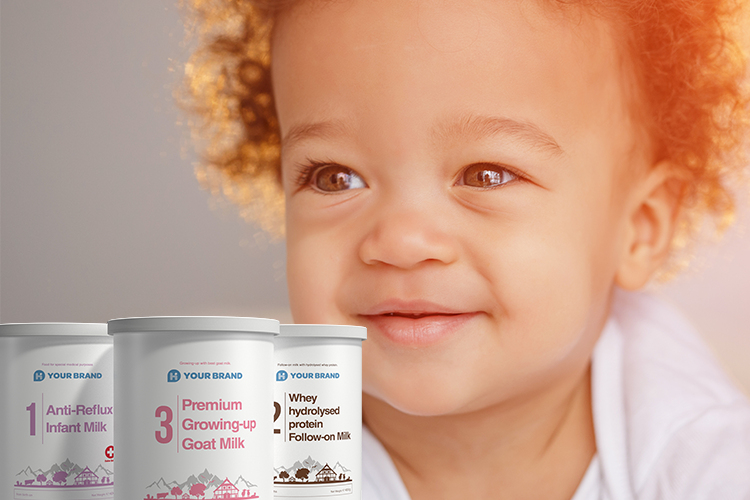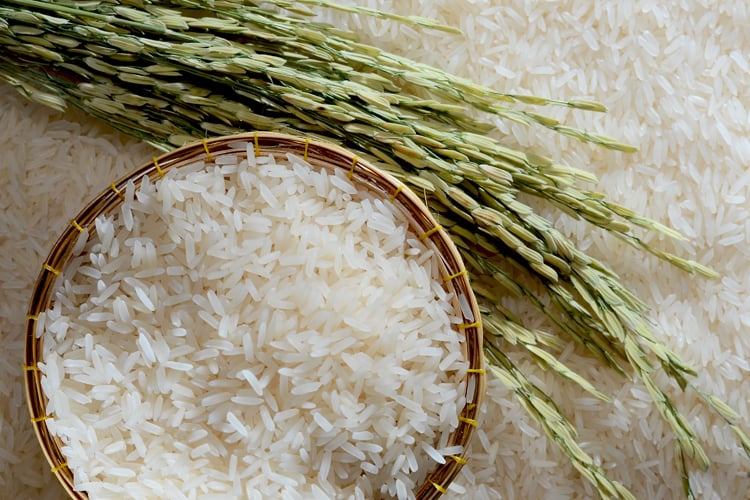
IRON-FORTIFIED INFANT AND YOUNG CHILDREN’S FORMULA
Tired, poor concentration and no interest in playing? Every child has days like this and they quickly pass. However, we need to be careful if the occasional day turns into several weeks or months: chronic fatigue, concentration difficulties and sleep disorders are frequently linked to iron deficiency in children.
Irrespective of whether we are young or old, our bodies need energy. It is supplied by the blood: if we have too little blood, our body receives too little oxygen. Our physical and mental performance is impaired. We feel listless and our concentration is poor. And we need iron to form blood.
Iron is essential for children
For healthy development in the growth phase, a child needs as much as 50 per cent more iron than a grown man.(1) And yet between 5 and 20 per cent of all children under the age of five in industrialised countries have iron deficiencies. In the emerging nations as many as 50 per cent of children are affected while the figure can be as high as 70 per cent (2, 3) in the developing world. In industrialised countries, iron deficiency is mainly due to changed eating habits that often lack variety. Our body cannot generate iron or store it for long periods so there has to be a regular intake of iron in the form of food. A balanced and varied diet is therefore essential to meet our iron needs. Meat and cereal products are excellent sources of iron, for example. But rather than taking in healthy iron, our young children frequently consume too much fat and sugar in the form of fast food, snacks and soft drinks. If a child gains too little iron in the development and growth phase it can lead to health problems, such as memory and attention deficiency as well as depression.(4) And the body suffers too. Growth may be impaired. Targeted iron therapy (5) can partially offset the physical and mental deficits. It is therefore important that iron deficiency is identified and treated at an early stage. Avoiding the deficiency in the first place would be even better.
Growing children need lots of iron
Most children are well supplied with iron in the womb and are born with sufficient levels in their systems. However, this supply is depleted after 4 to 6 months unless it is supplemented by weaning foods.
Between the age of 6 to 36 months, the child’s body is in its first critical phase with regard to levels of iron.
The iron content in breast milk falls by half in the first 6 months after birth. However, depending on growth levels, the amount of blood in a child’s body increases significantly from 6 months of age. The child now needs a lot of iron to form haemoglobin.(6) At this point it is essential to include an iron-rich supplement in a child’s diet. Breastfeeding is no longer enough on its own and there is little gain in attempting to compensate for the lack of iron in breast milk by turning to cow’s milk and milk products. Normal cow’s milk contains very little iron. If we take a small child who needs 7 milligrams of iron per day then it would need to consume 14 litres of cow’s milk in order to reach the recommended daily amount of iron.(7) The child can easily meet its daily requirements by drinking infant or young children’s formula that has been enriched with iron (between 7 and 12 milligrams per litre, for instance).
Infant and young children’s formula can combat iron deficiency
In general, children do not need iron-rich young children’s formula if they are nourished in line with the country-specific guidelines provided by health authorities. Meat, egg yolk and fish are all good sources of iron, as are pulses and whole grain products (see table), although iron from animal sources (heme iron) is far more readily absorbed by the body than plant (non-heme) iron.
Unfortunately, there remains a huge difference between theory and practice. As adults, we often lack the time or the opportunity to prepare fresh meals for our children several times a day. Far too often we give our children snacks of white bread and high-sugar biscuits and chocolate bars, instead of offering them fruit and a sandwich on wholemeal bread with vegetables, cheese or meat fillings. They might have a glass of healthy milk but we know cow’s milk only contains a little iron. For lunch or for the evening meal it might be frozen pizza, a plate of instant noodles or a ready-made meal cooked in the microwave. Ready-made meals are practical but they are not very rich in vitamins. If we do use them, it makes sense to give our children an iron-rich infant or young children’s formula. Most studies show that children who drink infant and young children’s formula have higher levels of iron than those who only drink cow’s milk.(8, 9)
Yet there can be pitfalls even when a child’s diet is basically healthy. Cow’s milk and some vegetable-based foods contain substances known as inhibitors that decrease the absorption of iron. These mainly include magnesium, calcium, polyphenols and phosphates. If a child eats ham or an egg, for example, this has little effect in raising iron levels if the child drinks cow’s milk or soya milk with the food. It would be better for the child to drink a glass of young children’s formula or fruit juice, as vitamin C helps to release iron from the food.
There are many ways to increase the iron content in a meal. Instead of using cow’s milk, you can add infant or children’s formula to children’s porridge or pureed vegetables for instance. It often helps to reduce our intake of milk products or other iron-inhibiting foods or to pep up ready-made meals with fresh ingredients. We owe it to our little ones.

Further Information
- Article "Iron deficiency in brief "
Sources
1) Swissironsystem.ch, eisenzentrum.org
2) Data.Worldbank, Prevalence of anemia among children under 5
3) WHO Global Database on Anaemia
4) Nutrition Reviews® Vol 69 (Suppl). S43 – S48
5) Lozoff B et al: Behavioral and developmental effects of preventing iron deficiency anemia in healthy full-term infants. Pediatrics: 2003;112:846-854
6) Recommendations by the German Society of Pediatrics and Adolescent Medicine (DGKJ)
7) Nutrition Reviews® Vol 69 (Suppl). S37 – S42
8) Smith NJ, Hunter RE. Iron requirements during growth. In: Hallberg L et al. Iron Deficiency. New York: Academic Press; 1970:199-211
9) Woodruff CW et al. The role of fresh cow’s milk in iron deficiency. Am J Dis Child. 1972;124:26-30
10) Brunner S et al. Zentrum für Labormedizin, Kantonsspital Aarau, Schweiz (Centre for Laboratory Medicine, Cantonal Hospital Aarau, Switzerland), Eisenmangel, Gehirnentwicklung und kognitive Leistungsfähigkeit, ARS Medici Dossier 2013
11) Institute of Medicine. Dietary Reference Intakes for vitamin A, vitamin K, arsenic, boron, chromium, copper, iodine, iron, manganese, molybdenum, nickel, silicon, vanadium and zinc. Washington D.C. National Academy Press, 2001. www.nap.edu/book










Leave a comment